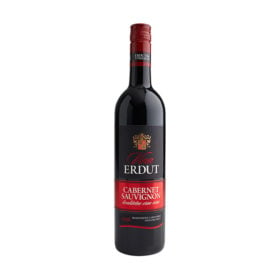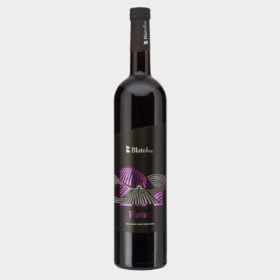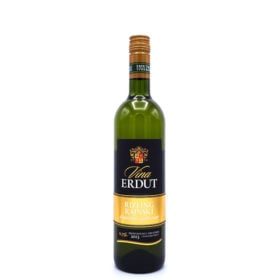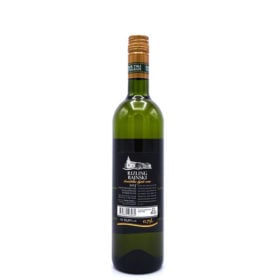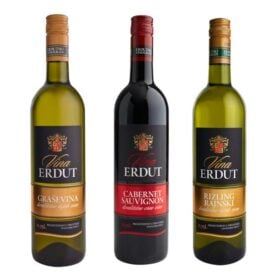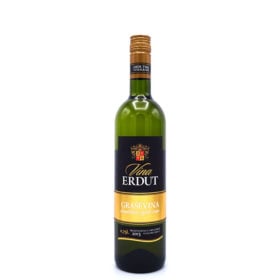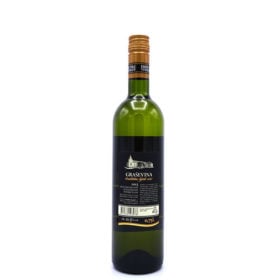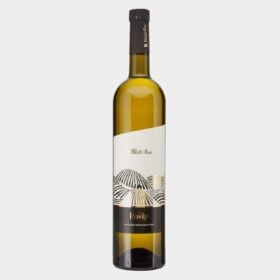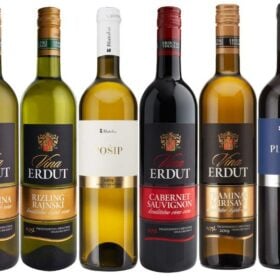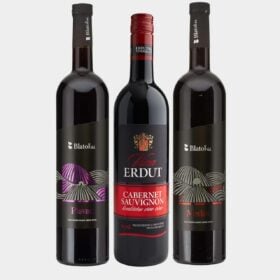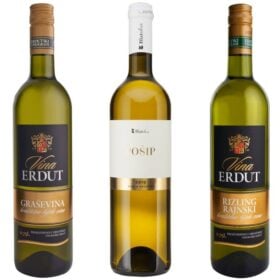Wine comes in different colors, from white to red to rose. All these wines are made from fermented grape juice, but how does this process produce such different colors?
The color of wine is determined by the type of grapes used and the winemaking process. White wines are usually made with white grapes, while red and rosé wines are made with red grapes.
Content
The fermentation process of the grapes
The skins of red grapes contain a pigment called anthocyanin, which is responsible for the characteristic red color of these wines. During the fermentation process, anthocyanin is extracted from the grape skins and gives its color to the wine.
White wines undergo a different fermentation process where the skins are removed for fermentation, resulting in a lighter colored wine. Rosé wines are made by fermenting red grapes with the skins still on, but for a shorter period of time than is used for the production of rosé wines. Red wine. This shorter fermentation time allows less anthocyanin to be extracted from the grape skins, resulting in a wine with a pink tinge.
The color of wine can also be affected by the aging process, also known as aging the wine. Wine aged in oak barrels will often take on a golden or amber color due to the presence of tannins in the wood. Wines that have not been aged in barrels can undergo another aging process where they are exposed to oxygen, which can also change color. For example, white wines can become more yellow over time, while red wines may become browner.
So the type of grape, the winemaking process and the aging process all contribute to the color of wine. Next time you enjoy a glass of wine take a moment to appreciate all the factors involved in creating the unique color.

the grape skin
Om red wines red and rosé wines rose the wine must be made from black-skinned grapes. These skins must be kept in contact stay with the juice.
If the juice is extracted and the skin is immediately removed, it is possible to White wine to make from black grapes – Champagne is a famous example of a wine made this way. In practice, however, almost all white wines made from white-skinned grapes.
The type of grape used
The color of wine is determined by the type of grape used, as well as the length of time the juice is in contact is with the shell. White wine is made from green grapes, while Red wine is made from red or black grapes. The colorless juice of crushed grapes begins to turn yellow-brown when exposed to oxygen, and this process is accelerated by the presence of anthocyanin in the grape skins.
Red wines get their color through prolonged contact with the skin, which ensures more oxygenation and therefore a deeper color development. White wines usually only come in for a short time contact with the peels, preventing them from developing a deep color.

The influence of a winemaker
With the making of White wine the grape skins and seeds are usually removed before fermentation. The clear, sugary liquid is then fermented into White wine. The color of the wine is determined by the time the skins contact is with the juice and by the type of grape used. White wines can vary in color from pale straw yellow to yellow, while red wines usually amber or purple.
The color of wine is determined by the winemaker's methods during fermentation. The longer the grape skins in contact are with the juice, the deeper the color will be. Temperature and time also play a role in determining the final color and tannin content of the wine.
The color of wine is determined by the time the grape juice is in contact is with the grape skins. If the juice in contact comes with the skins, the wine turns white. If the juice is left in for a long time contact is with the skins, the wine turns red.
Analyze the wine color like a pro
- Original price was: 19,98. 13,99Current price is: 13,99. Add to Cart
When it comes to the color of wine, many factors come into play. The most important is the grape variety used – each type of grape produces wine with a distinct hue. For example, red wines are made from dark-colored grapes such as Cabernet Sauvignon en Pinot Noir, terwijl white wines are usually made from lighter colored grapes such as Chardonnay and Sauvignon Blanc.
Other factors that can affect the color of wine include the degree of oxidation (oxygen exposure), the length of time the wine has been aged, and whether or not it has been filtered. In general, younger wines tend to be brighter in color, while older wines tend to have a more intense, deeper hue.
Use the following tips to assess the appearance of your wine:
- Hold the wine at a 45° angle to a white surface (e.g. a piece of paper). This will help you better judge the color and intensity.
- Check for sediment on the bottom of the glass. This is especially common in older wines and can cause the wine to become cloudy or dull.
- Note the clarity of the wine. A wine with good clarity should be free of particles or haze, while a wine with poor clarity may appear cloudy or unclear.

Difference in regions
Different regions produce wine with different characteristics, and these characteristics can be used to determine the color of wine. For example, wines from cooler regions will usually be lighter in color, while wines from warmer regions tend to be darker. The type of grape used can also affect the color of the wine, as red grapes Red wine produce and white grapes White wine.
Finally, the aging process can also affect the color of wine, as white wines usually become more golden with age, while red wines usually become more brick red in color as they age.
So, to summarize, the color of wine is determined by the region in which it is produced, the type of grape used and the aging process. Cooler regions will produce lighter wines, while warmer regions will produce darker wines. Red grapes will Red wine produce, while white grapes White wine will produce. And finally will white wines usually become more golden with age, while red wines usually become more brick red in color as they age.
The difference in the color tones of a wine
Different colors of wine can be determined by the grape skins. If you attend a wine tasting, you will see that the different depths and colors are clearly visible. On the other hand, the color of an old wine may have changed with age. However, the first appearance of any newly made wine is almost entirely influenced by the grape skins.
Comparing colors of wines can be fun and informative, whether you're at a formal wine tasting or informally trying different wines with friends. Try to notice the differences in depth and color between different types of wine.
The color of wine is determined by the pigments in the grape skin. These pigments are called anthocyanins and can range in color from pale pink to deep purple. The amount of anthocyanin in the grape skin determines how much color is extracted from the grape during fermentation.
White wines are made from white-fleshed grapes and these grapes contain very little anthocyanin. The color of White wine is largely determined by the time that the juice is inuenced during fermentation contact is with the shell. Chardonnay for example, usually has more golden or yellow hues, while Sauvignon blanc tends to be more pale straw.
Rosé wines are made with a mixture of red and white grapes, or limited by the juice in contact to come with the skin of red grapes. The color can vary from light pink to deep salmon, depending on the grape variety and winemaking technique.
Red wines are made from red grapes, which contain high levels of anthocyanin. The longer the juice ferments in contact with the skins, the deeper the color of the wine will be. Some common grape varieties for Red wine are Cabernet Sauvignon, Merlot, Pinot Noir and Sangiovese.
The type of barrel used for aging also plays a role in the final color of the wine. barrels made from French oak tend to add a golden hue, while barrels made from American oak can impart a brown or reddish tint. Finally, wines aged in stainless steel tanks retain their bright, vibrant colors.
Croatia is a country with a long wine tradition
Croatia is a country of diversity, and so is the wine. More than 100 native grape varieties are grown in the country, resulting in an equally diverse range of wines. Croatia is known for being home to a number of excellent wineries and vineyards, producing both traditional and modern styles of wine. Here are three of the most popular Croatian wines:
1. Graševina
Graševina is a white grape variety that is widely grown in Croatia, especially in the northwestern region Slavonia. It produces light, fresh wines with delicate floral and citrus aromas. Graševina is often compared to the Italian Pinot Grigio or Sauvignon Blanc and is an excellent accompaniment screw– and seafood dishes.
2. Plavac Mali
Plavac Mali is a red grape variety native to Croatia. It is the main grape used in the production of the Dalmatian "Zinfandel“, a full Red wine with intense dark fruit flavors. Plavac MaliWines usually contain a lot of alcohol and go well with hearty meat dishes.
3. Posip
Posip is a white wine grape variety grown in Croatia, where it is used to make light white wines to produce. The grape is known for its high acidity and is often used in blends with other grape varieties. The color of Posipwine can vary from pale straw yellow to yellow, depending on the degree of ripeness. The grape is also used for the production of sparkling wine and dessert wine.
4. Malvasia Dubrovnik
Malvasia Dubrovačka is a white grape variety grown in the Dubrovnik region of Croatia. The resulting wines are medium-bodied with refreshing acids en aroma's of stone fruit and honey. Malvasia Dubrovačka goes well with seafood, poultry and mild cheeses.
These are just some of the many excellent Croatian wines worth exploring. So the next time you feel like something new, be sure to try one of these strains.

Conclusion about the wine colors
The color of wine is determined by the grape variety, the maceration time and the production process. The most important factor is the grape variety. White wines are made from white grapes, while red wines are made from black or blue grapes.
The maceration time is the time when the grape skins are in contact come with the juice. This determines the color of the wine. The production process is also a factor, as some winemakers use a technique called “bleeding” to change the color of the wine red wines to delete.
Wines from Croatia are among the finest and tastiest in the world. So if you are looking for a wine that will please you, be sure to try Croatian wines!


